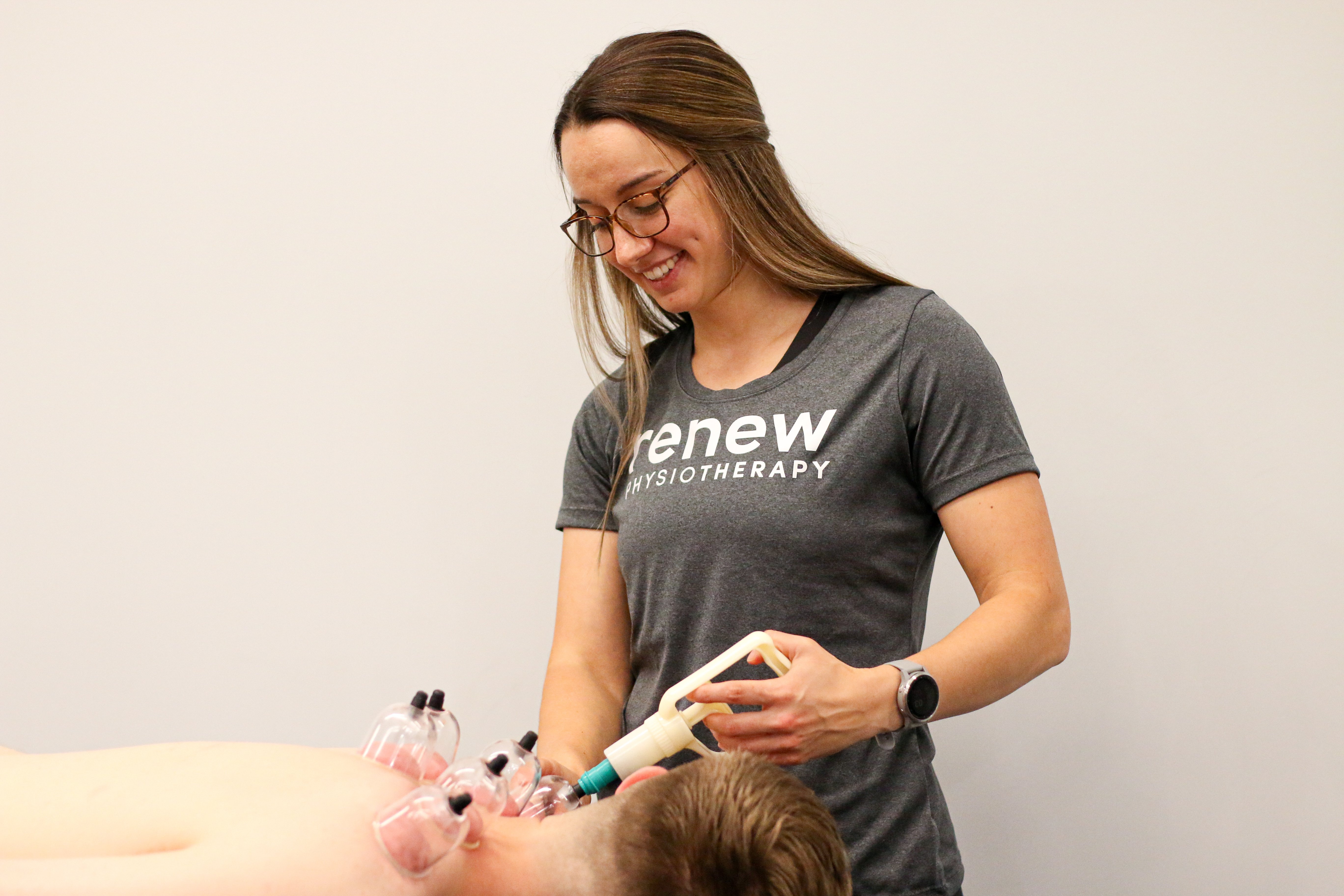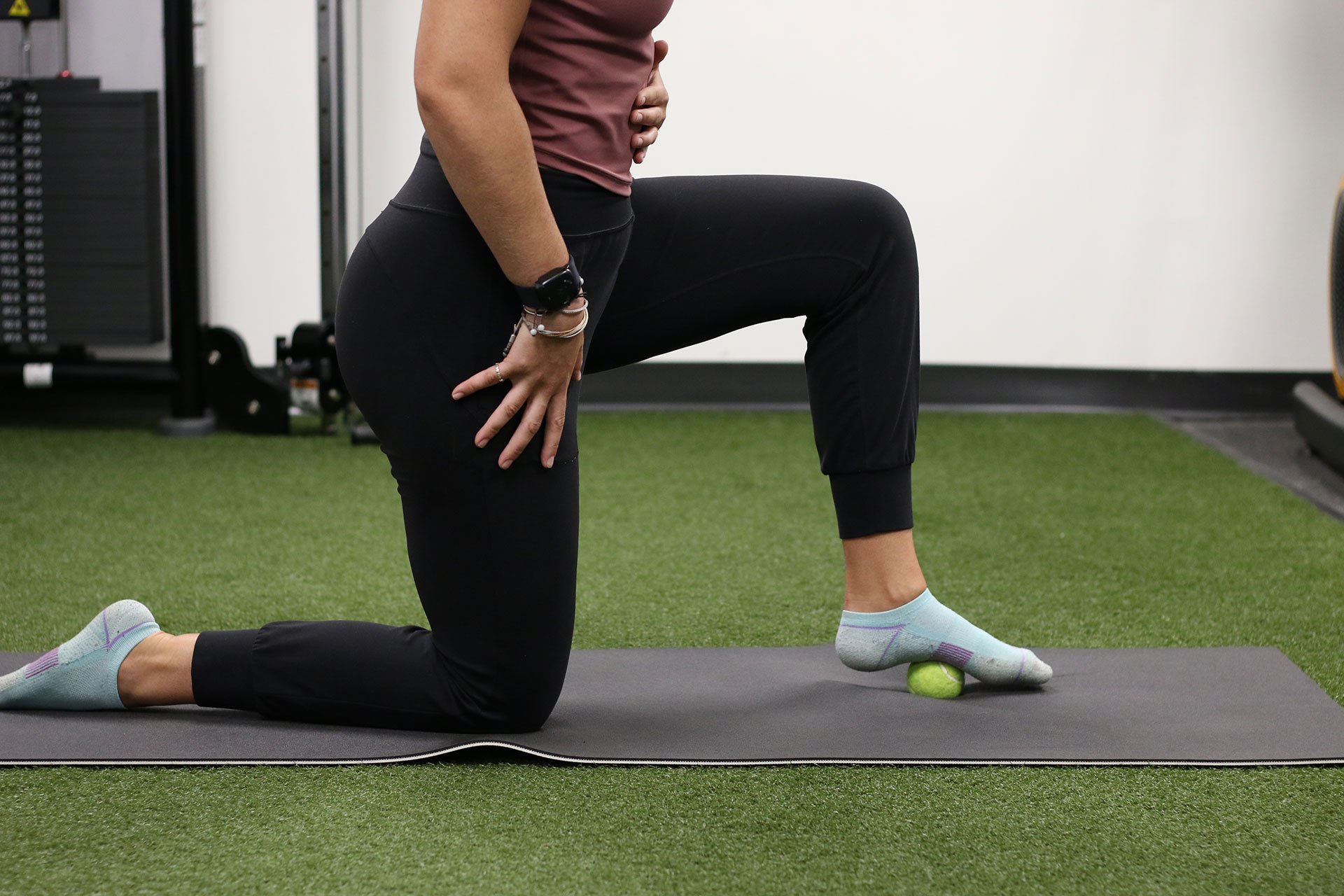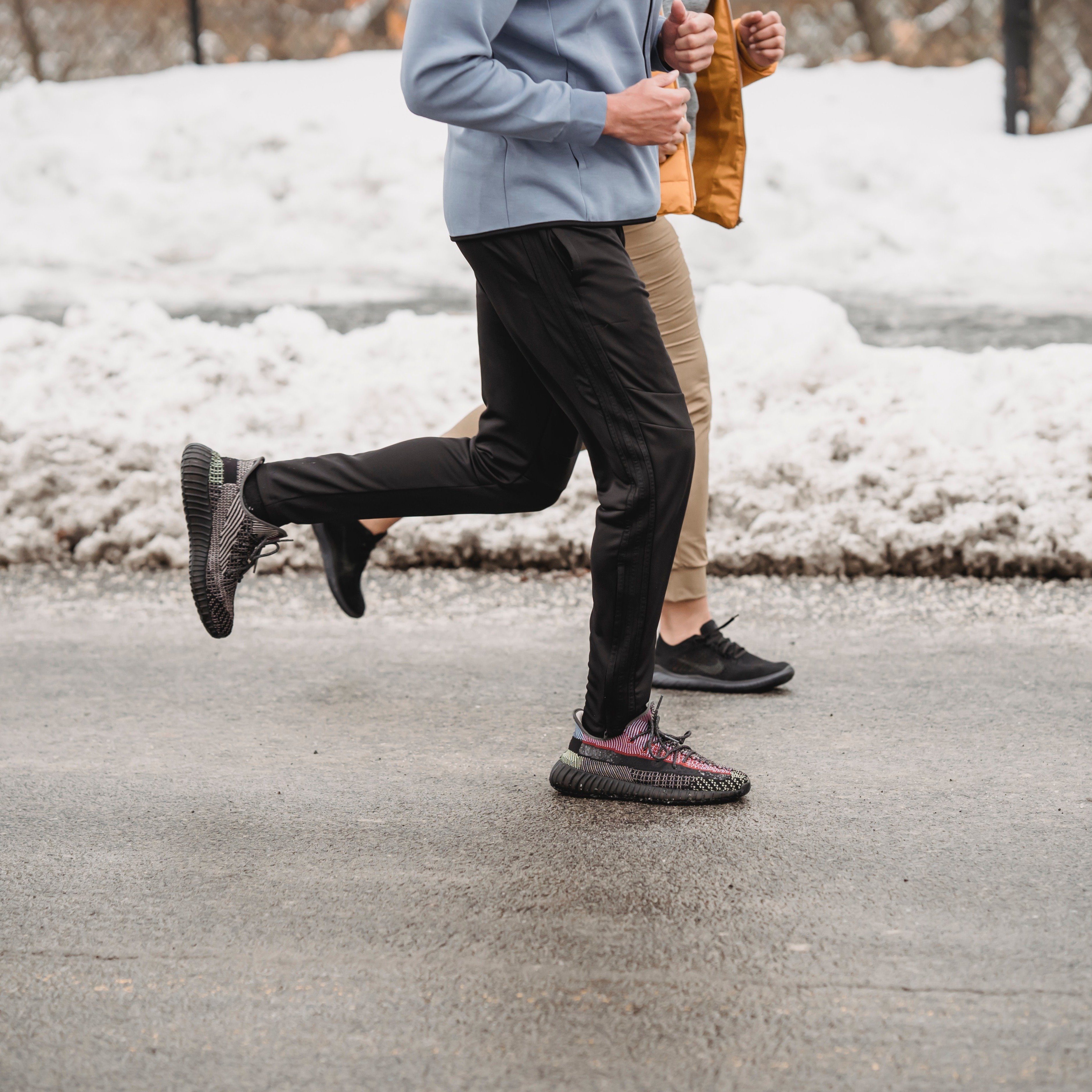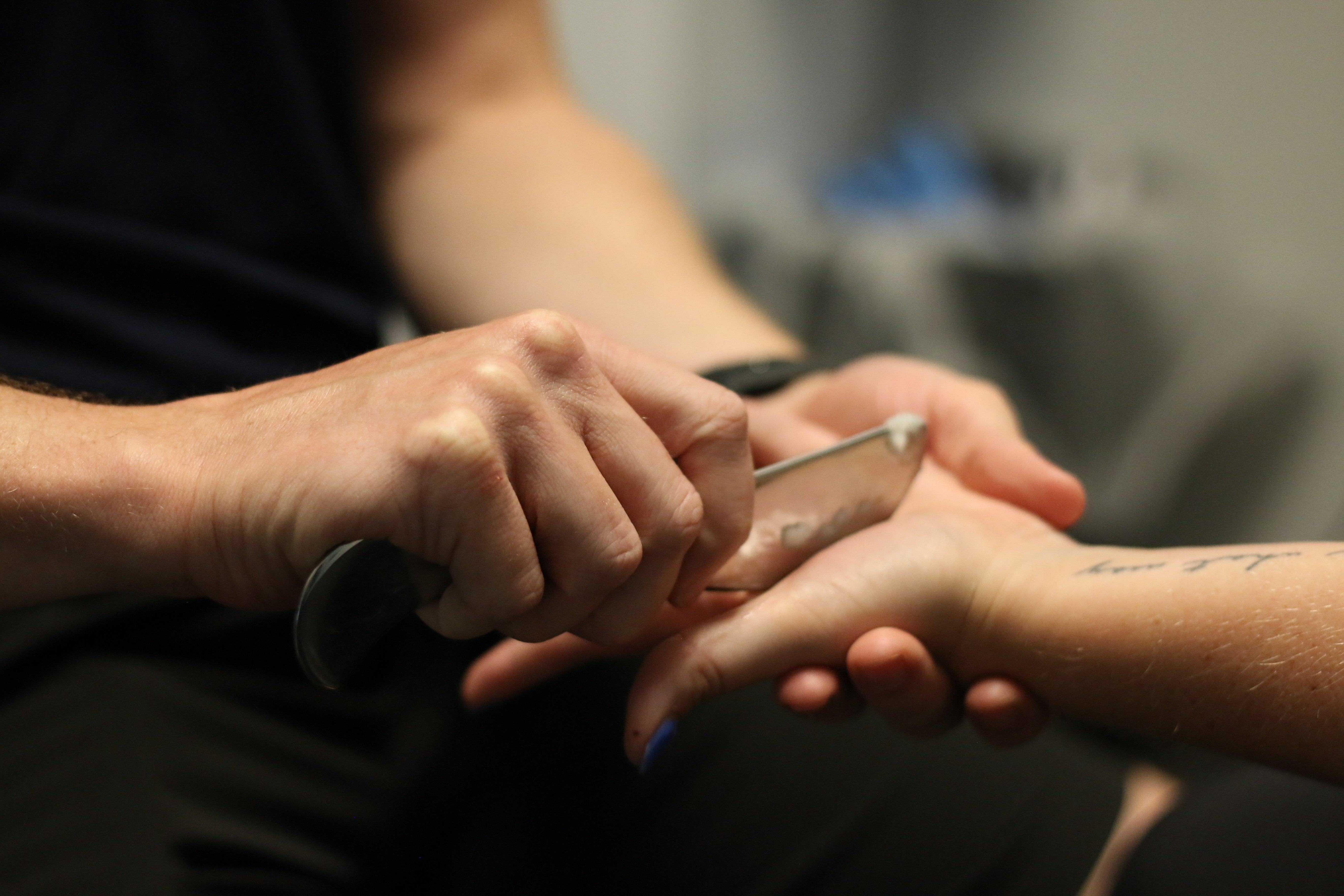Have you noticed more people around the gym showing up with dark, round marks on their backs and shoulders? These marks are a result of cupping therapy!
Cupping is a manual therapy that is exactly what it sounds like. You suction glass cups to sore, injured, or tense parts of the body to increase blood flow to that area to that area.
In this blog, two licensed Physiotherapists answer questions to help you figure out everything from what a professional cupping session would be like to whether it's the right form of recovery for you!
When would you recommend cupping instead of another type of therapy?
"At Renew, we like to use cupping to give you an extra boost to your normal treatment by increasing blood flow and decreasing pain in specific tissues. Cupping can be a great way to promote healing, recovery, and relaxation when you have muscle strains, fatigue, or general tightness.
Depending on your comfort level, we might mix in some muscle scraping to pinpoint those more painful areas that need extra attention. But if your tolerance is lower or you find treatments like dry needling or instrument-assisted soft tissue mobilization (IASTM) painful, we recommend cupping as a more comfortable alternative!"
- Natalie Brazil, DPT
What cupping technique(s) do you use in your practice?
"We both do dry cupping and cupping massage!
With dry cupping, we place the cups on the target area and create suction with a value versus the traditional heat application. The cups typically stay on for 5 to 7 minutes per session (depending on your needs as a patient.)
There are some times when a cupping massage will also work wonders. In these sessions, we use less suction to gently glide the cup along the larger body areas to increase blood flow and relaxation."
- Bobby Stanley, DPT
Does it hurt? What does getting cupped feel like?
"Typically, cupping therapy doesn't hurt. You'll feel a tightness or pulling sensation on your skin as we suction the air out of the cups rather than pain. Most people adapt to the sensation quickly and find it tolerable (or even relaxing once they get used to it!)
Overall, it's a unique experience that you might find beneficial for relieving muscle pain and tension, but it's important to communicate with your therapist during the session so we can adjust the suction if it becomes too uncomfortable."
- Natalie Brazil, DPT
Does cupping always leave a mark?
"Cupping does typically leave a mark, but whether you get marks depends on:
- The intensity of the suction.
- The amount of time the cup is left on.
- Your skin's unique response.
The marks can vary in color and usually fade within a few days to a week, depending on the healing process."
- Bobby Stanley, DPT
If you're curious about what the colors of your cupping marks mean? Click here to read our blog "What Are Your Cupping Colors Telling You?"
How many sessions will I need to see results?
It totally depends. The number of sessions you need to feel or notice results from cupping can depend on the severity of your condition, your body's unique response, and the consistency of getting treated.
Generally, some people feel improvement or relief after their first session (especially for muscle tightness and pain relief.) However, chronic conditions or more severe issues may take anywhere from 4-6+ sessions to see continuous improvement.
- Natalie Brazil, DPT
Want to know if we recommend cupping for you?
Click here to schedule your free screening with a physiotherapist so we can make a recommendation based on your unique needs and conditions!










